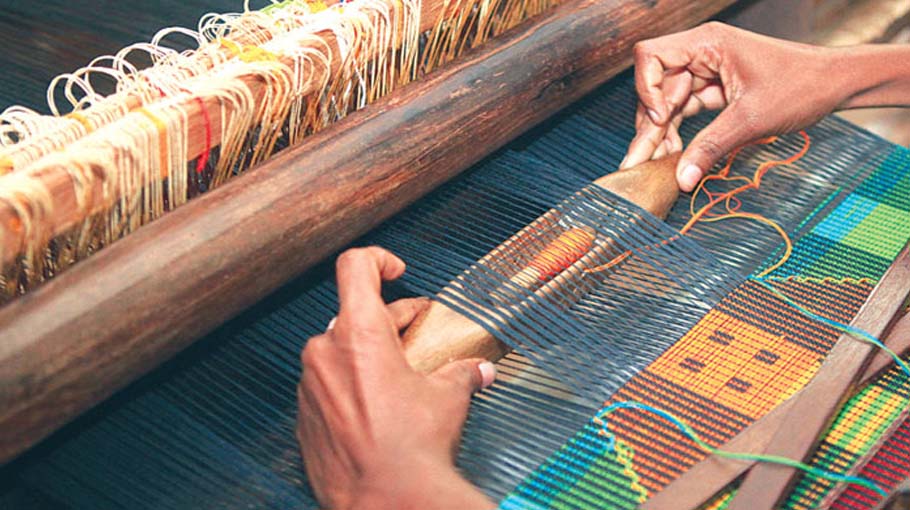Dinajpur handloom industry on brink of extinction

The handloom industries in Dinajpur are on the verge of extinction due to various reasons including the absence of government patronisation, lack of easy-term loan, lack of marketing facility and an abnormal increase of price of yarn, dye and other materials.
It is learnt, there is a bright prospect of the handloom industry in Dinajpur due to availability of expert artisans and labourers at a low wages but the industry could not be flourished unless the problems relating to the industry are resolved.
Read more: Tangail’s famed handloom industry in dire strait
At least 15,000 expert artisans and their family members involved with the industry are spending an inhuman life for the last one decade or more. Only a few handlooms are now in operation somehow.
According to sources, once upon a time people of Hindu community were mainly involved with the profession of weaving in Dinajpur. Later, Muslims also involved with the profession.
Nearly 50 families at Karigorpara under Ranibandar area of Chirir Bandar of Dinajpur are still engaged in making clothes using handlooms.
The weavers here make mainly the Lungis. Many of the expert artisans in this field have changed their professions as they failed to cope with the profession of weaving furthermore.
Sources said at 13 villages of Ranir bandar of Chirir Bandar and Khansama upazilas, handloom industries flourished during the British reign. Ranirbandar earned the reputation of handloom industries throughout the country. Expert artisans and weavers made Saree, Lungi, Gamcha, Towel, mosquito-nets and Gultex bed sheets which were sold in various local markets of the country.
With the increase of demand of the quality products, more than 200 weaving industries were set up in the region and nearly 10,000 people were directly involved with the industries.
Weavers at Karigorpara informed, tey can earn only Tk 50 by weaving a saree and a weaver can weave three sarees a day, thus earning only Tk 150 a day. Some weavers informed, they cannot manage the cost of study of their offspring as they earn a meagre amount to survive. They are trying to change their lot by working round the clock but are failing to cope with the competition. They said, earlier they use Charka to make yarn but now a days yarn is prepared in machines. As a result, the using of Charka is now almost extinct. However, some poor families are still seen to prepare yarn by using the Chaka.
Weaver Abdur Rahman informed he lives with his wife, two daughters and a son. He got two handlooms from his father and recently he purchased two more looms to achieve solvency in the family. But, still he cannot maintain his family properly.
Read more: Handloom industry potential needs to be tapped
He informed, the loan they received during the rule of Ershad government is still hanging on their heads. They complained, they are not receiving any assistance from the government. With great regret they mentioned, if such situation continues to run, the handloom industries would also face extinction like that of Muslin in a short time.
They further said, all the weavers are entangled into the loans from the NGOs. As a result, a lion's share of their income or profit is pocketed by the NGOs.
Another artisan Idris said, he has two looms. ' I am ignorant and if I could get any scope to study in the past, I would never stay in this profession of weaving,' he added. He seeks government's assistance for the survival of the industries.
Monjur Hasan, former Liaison Officer of Bangladesh Handloom Board, Rangpur, informed the weavers are failing to marketing their products and earning a profit. They are failing to cope with the increased price of all materials in phases.
The handloom industry bears a bright prospect in Ranirbandar and other surrounding upazilas. The sanction of loan at an easy term, supply of required materials at a fair price and ensuring marketing facilities for the products are they ways to recover the lost glory of the handloom industries in Dinajpur, he added.




